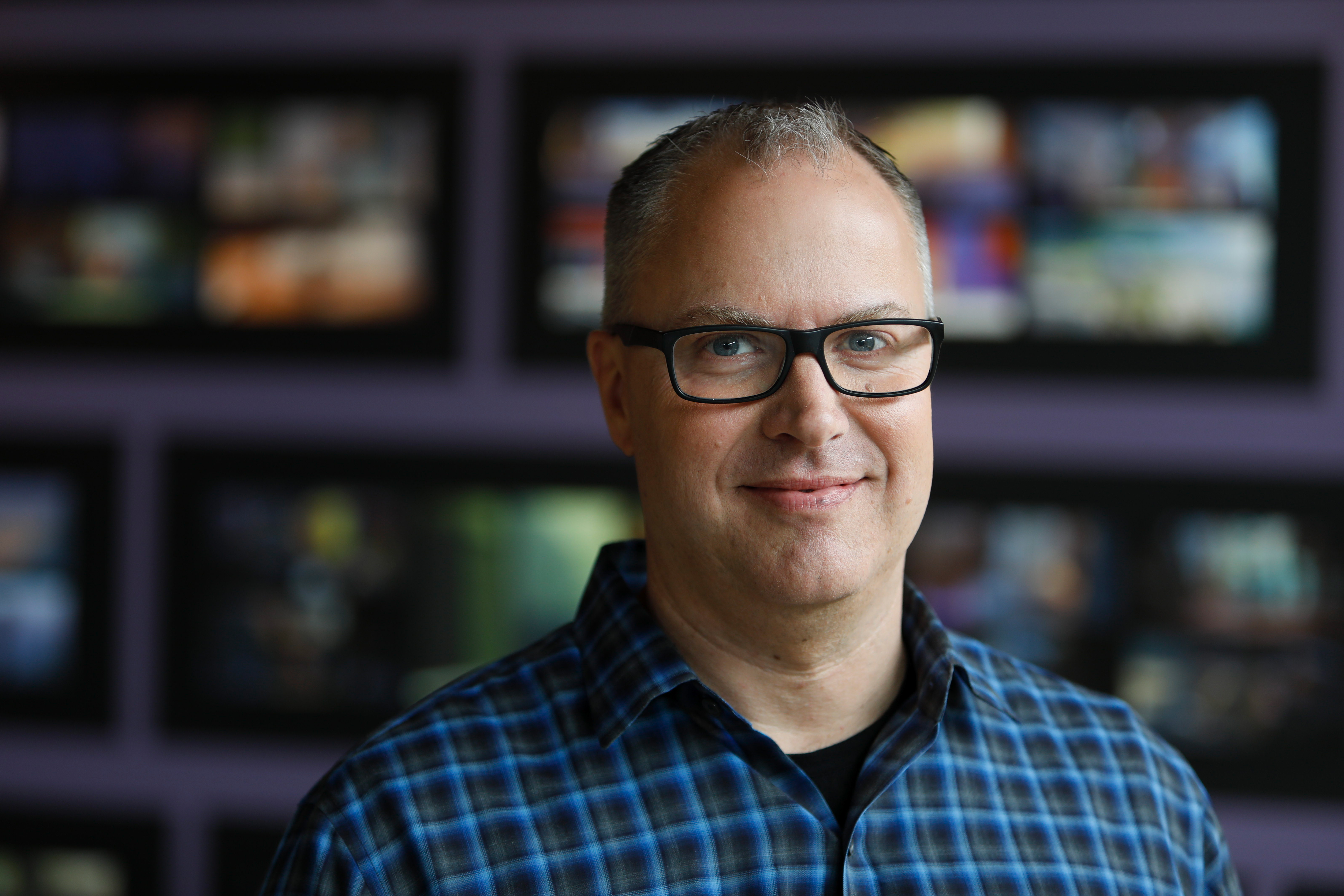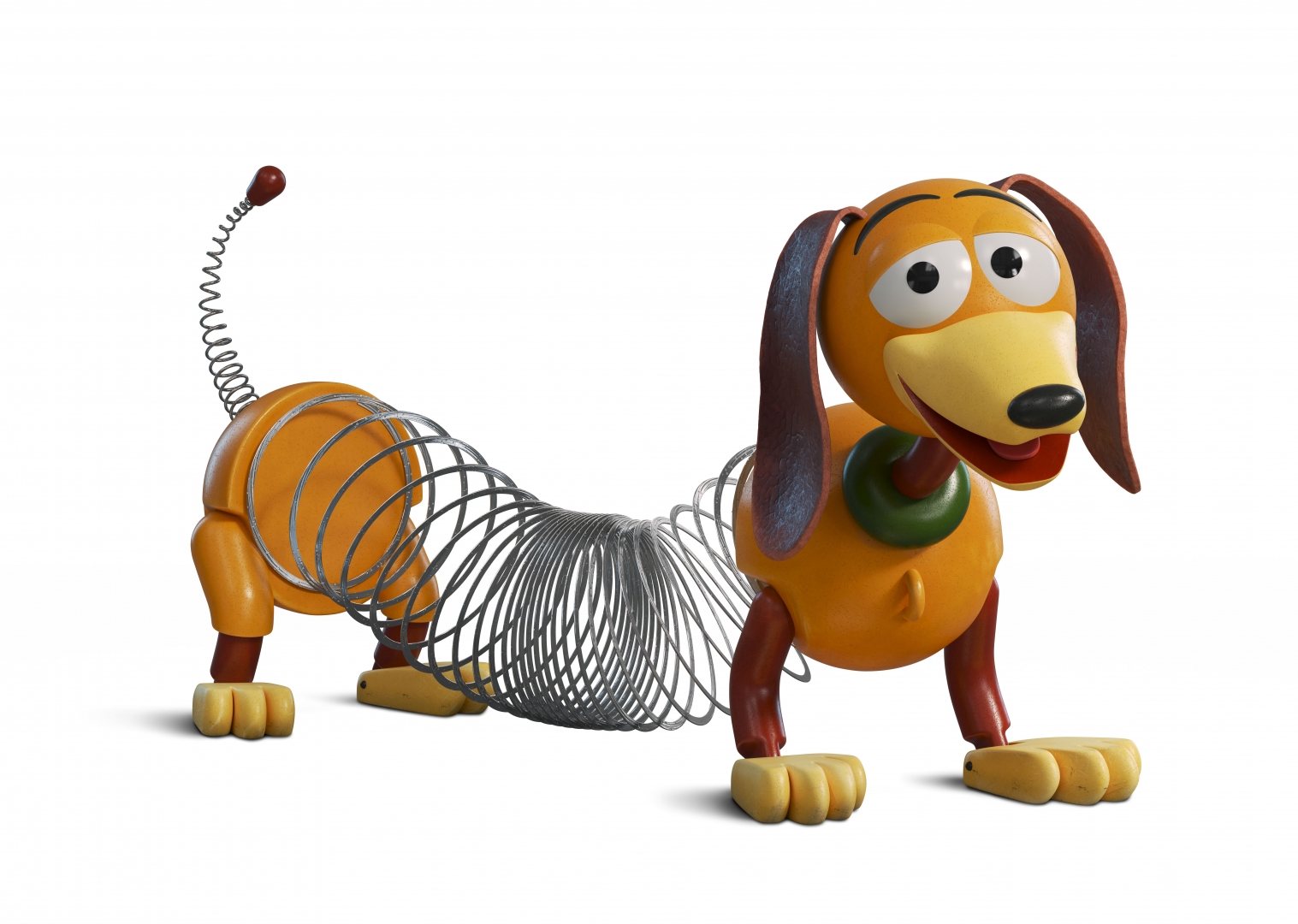5 Questions With Alumnus Mark Nielsen

Mark Nielsen is photographed on March 26, 2019 at Pixar Animation Studios in Emeryville, Calif. (Photo by Deborah Coleman / Pixar)
Mark Nielsen (Journalism, ’92) was still attending Chico State when he was cast as an extra in the film Sister Act, launching a career that has truly been a childhood dream come true. Soon after graduation, he began working in the film industry as a production assistant on the movie So I Married an Axe Murderer. Nielsen made the leap to animation films while working on The Nightmare Before Christmas and James and the Giant Peach, and joined Pixar Animation Studios in 1996. Now a producer, he has worked on 10 of Pixar’s animated films, including A Bug’s Life, Cars and Cars 2, Inside Out, and, most recently, Toy Story 4.
Did you always know you wanted to make movies?
As a kid, it was something I would do with my cousins and my friends in the backyard with our home video camera. But it was a love that I’d always had and that I carried with me when I went to Chico State. I didn’t really know what to do with that love or whether it was even a rational love. I came to Chico State in 1988 as a business major, not knowing exactly what I wanted to do. In my first two years there, I really found myself drawn to my communications and my English classes—public speaking and debate, the modern novel and Shakespeare. That’s where my heart was. In my second year, I changed my major to journalism and public relations, and my minor to English. I really put my focus there, because I found it a much more rewarding and creative environment.
What was your Chico Experience like? Which professors or classes made a difference to you?
There was one English professor in particular who had the largest impact on me. Professor Lennis Dunlap was the kind of guy who at first was incredibly intimidating because he held his students to a really high standard. If you didn’t bring your best work, you would quickly be put on public display in class and be called out for what you brought—or what you didn’t bring. But if you did bring your best work, and he encouraged you to do that, he provided a lot of praise and encouragement. He’s this incredibly smart professor but also very gracious. He was the one I opened up to at a certain point and told about my love of filmmaking. I asked him whether he thought that was something worth pursuing. And he was the one who said, “You have to do this, you have to take that desire seriously. And if that’s on your heart, you have to pursue that in a real way, and you will regret it for the rest of your life if you don’t.” I had never had anyone speak that directly to me about that, and I hadn’t really opened up to anyone about that desire before then. He was my first reality check that caused me to take that idea seriously, even though it wasn’t specifically what I had studied in school.
What were some of the movies you grew up watching as a kid?
It probably goes without saying that as a ’70s child, Star Wars was by far the greatest influence. It was the first movie I saw in theaters in 1977 as a 7-year-old. My friends and I would go see movies every second. Starting in middle school, we’d go in early on a Saturday and just jump from theater to theater and watch four movies in a day, if we could. We just couldn’t get enough of it. Steven Spielberg movies back then were also massive for me.
As a storyteller for Pixar, which stories are important for you to tell?
I feel so fortunate to have been at Pixar, because it’s the kind of place that tells stories that are very human and relatable to people of all ages. It’s been a match made in heaven for me, and ever since I got here in 1996, I just fell in love with the style of storytelling they were doing. Even though the vessel for those stories was monsters or toys or fish, they were always very human at the core. They were always stories that I felt I could personally connect to and that I saw a lot of other people personally connect to and that would move people. I always just wanted to be a part of storytelling that would resonate. Using the movie Up as an example, we had a protagonist, Carl, who was this grumpy old man, and that could be a problem right out of the gate, because he could come across as unappealing. We didn’t want the audience to check out and tune out on him when they saw the way he treated [the young boy] Russell. But when you tell someone’s story, when you see where they’ve been and what they’ve been through, it gives you the ability to connect with them at a deeper level. Using a seven- to nine-minute montage of his marriage, we found, was the perfect way to very quickly feel for and empathize with Karl. Then he could be a grump to the rest of the characters in the movie, and you get it, you’re like, “I understand, he’s almost earned permission to be that way because I know what he’s been through.”

Which Pixar character do you resonate with most and why?
There have been a lot of Pixar characters, let me just put that out there first. Most recently, of course, I’ve been living in the Toy Story world, so I have to pick one of those characters. I think I’m going to go with Slinky Dog. He’s not really the standout one that you might take away as a major character, but I love his loyalty to his friends. He’s like the nicest dog in the room. He goes to great lengths, pardon the pun, to help them get out of a jam whenever they’re in trouble. And he’s done that through all of the films. I just love Slinky, I think he’s such a good friend.


